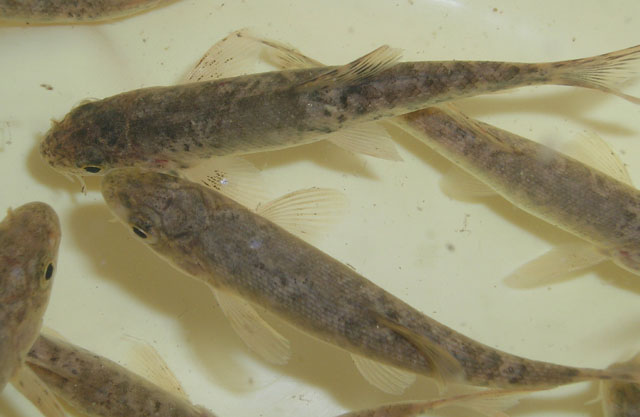| Cyprinidae (Minnows or carps), subfamily: Barbinae |
| 30 cm TL (male/unsexed) |
|
benthopelagic; freshwater |
| Europe: Mediterranean slope of Spain from Llobregat to Riudecanyes drainages. |
|
Diagnosed from other species of Barbus and Luciobarbus in Iberian Peninsula by having the following characters: body with numerous small black dots, more or less aligned in longitudinal series along scale rows; anal, part of caudal and pelvic fins red during spawning season; lower lip with a median lobe; last simple dorsal ray slender, with small or without serrae posteriorly; and lateral line with 46-50 + 3-4 scales (Ref. 59043). |
| Occurs in water bodies on low-lying plains, with little current; in water courses at high altitudes and in springs and associated wetlands (Ref. 26100). Most frequently found in upper, cooler stretches of streams, with current and stone bottom. Feeds mainly on benthic macro-invertebrates, especially insect larvae. Spawns on vegetation and under stones (Ref. 59043). Is threatened by water abstraction, pollution, and habitat destruction (Ref. 26100). |
|
Vulnerable (VU); Date assessed: 31 January 2006 (A2ce+3ce) Ref. (130435)
|
| harmless |
Source and more info: www.fishbase.org. For personal, classroom, and other internal use only. Not for publication.

